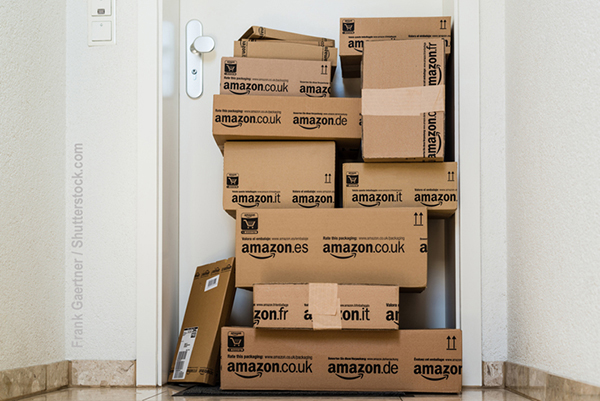The rise of Amazon.com has forced traditional retailers to adapt their business models. But who will be the winners – and losers – in the battle with e-commerce?
4 minute read

On August 8, after weeks of fevered speculation, US retail giant Walmart Stores announced its acquisition of Jet.com, an e-commerce firm, for $3.3 billion in cash and stock. For Walmart, which has an estimated market value of $250 billion, the sum was little more than pocket change – but it seemed a large amount to lavish on Jet, a two-year old company yet to turn a profit.
A clue to Walmart’s thinking lay in its statement on the deal, which lingered on the past achievements of Jet’s charismatic founder and CEO, Marc Lore. “Lore previously co-founded and led Quidsi, [the parent company of several e-commerce sites]…a prominent and successful business that was ultimately sold.” The statement neglected to mention the buyer. In 2010, Quidsi was snapped up for a cool $545 million by the world’s biggest online retailer: Amazon.com.
The market consensus is that Walmart’s takeover of Jet was a vastly expensive ‘acqui-hire’ – a way of obtaining Lore’s expertise in developing websites able to compete with the might of Jeff Bezos’ Internet giant. The deal illustrates the lengths to which bricks-and-mortar retailers are willing to go as they battle for supremacy with e-commerce companies, which have lured their customers, disrupted their business models and eroded their profit margins.
Bezos’ beast
E-commerce sales topped $97 billion in the second quarter of 2016, an increase of 16 per cent over the same period a year earlier, according to data from the US Department of Commerce, while total retail sales grew by five per cent.
Amazon is responsible for much of the recent growth in e-commerce. Although its most recent quarterly results disappointed, revealing lower-than-expected profits, it continues to dominate the sector: According to Morgan Stanley, Amazon’s gross merchandise value has grown faster than total global e-commerce sales for the last six years, reflecting its pre-eminence.1
The reasons for Amazon’s success are manifold; from the entrepreneurial nous of Bezos, its founder and CEO, to its tentacular reach into new markets and sectors. But Amazon’s business model lies at the heart of its power. From its beginnings as a value bookseller in the late 1990s, Amazon has been designed to cut out the kind of costs that hamper its store-based rivals.
Originally, Amazon was based on exploiting the cost inefficiency of bricks-and-mortar retailers. If your model is based on warehouse deliveries, you can avoid the occupancy costs of owning a shop and the labour costs of staffing it. The cost advantage was very wide in some categories – and those profits enabled Amazon to move into new areas.
Amazon passes on a chunk of its cost savings to consumers and invests heavily in new technology, keeping its margins thin: Morgan Stanley estimates Amazon’s core retail margins were less than 0.5 per cent of its global gross merchandise value of $205 billion in 2015. This may not always keep shareholders happy – Amazon stock fell six per cent following the company’s latest quarterly results announcement on October 27 – but they give it a competitive advantage. New entrants to the e-commerce market must go through the costly process of building online platforms and adapting their existing business models even as Amazon streaks ahead.
All is not lost for bricks-and-mortar retailers, however. According to Richard Levis, Global Real Estate Analyst at Aviva Investors, stores may be able to mitigate the effects of e-commerce if they can offer three things.
“The first consideration is convenience – given that buying online is so convenient, stores need to ensure they are not badly located or difficult to access,” says Levis. “They also need to offer a compelling ‘experience’: when buying online is so easy, consumers need a good reason to make the journey to a shop. The third factor is value. Buying online is generally cheaper, so stores have to reduce prices to remain competitive. Traditional retailers that address these concerns will tend to be resilient in the face of online competition. Those that don’t will fall behind.”
Convenience, experience, value
So which companies are succeeding on these three fronts? The first – convenience – presents perhaps the most daunting challenge. Amazon’s ‘one-click’ system and 24-hour delivery service means most customers can get what they need from its vast range of merchandise at short notice and with a minimum of fuss.
Traditional retailers have no choice but to develop their own online offering if they are to keep pace. Walmart will hope its purchase of Jet gives impetus to its sluggish online revenue growth. New hire Marc Lore – who is reportedly receiving up to $1 billion in cash and stock from the Jet deal – has his work cut out: e-commerce presently accounts for only three per cent of Walmart’s total sales. A successful online strategy is likely to take advantage of Walmart’s extensive store network. As well as splashing out on Jet, Walmart recently introduced an e-payments system called Walmart Pay in an effort to match the ease of Amazon’s integrated ordering and payment platform.
As well as trying to compete with the convenience of e-commerce, retailers must focus on providing an ‘experience’, making their stores more than glorified showrooms for stock. For example, one of the companies hit hardest by the rise of Amazon, bookseller Barnes & Noble, recently announced plans to expand the cafes inside its stores. These will now serve wine, beer and offer a waiter service – a way to attract customers and entice them to stay longer.
This focus on experience doesn’t necessarily mean expensive technology or store revamps, however. ‘Off-price’ retailers such as TK Maxx (known as TJ Maxx in the US) or Ross Stores have proved notably resilient in the face of online competition. TK Maxx, for example, has benefited from the rather intangible sense of novelty its stores offer. “Every week the merchandise will be different. That generates customer loyalty, because customers will keep returning to see what’s new,” says David Bucolo, Senior Securities Analyst at Aviva Investors.
But TK Maxx also offers something else – value. This is partly because its vast network of stores enables it to buy in bulk from wholesalers and to offer discounts on brand-name apparel that customers cannot find elsewhere. In China, where the sector lacks an incumbent of TK Maxx’s size and scale, the biggest off-price retailer is Vipshop, an online firm that offers flash sales of luxury goods. This shows that convenience and experience are not enough to insulate a sector from the threat of online disruption – companies also need to compete on price.
As retailers expand online operations their margins are suffering. Research shows retailers’ earnings before interest and tax (EBIT) decline 30 basis points for every percentage point of online penetration; in other words, the more trade a retailer does online, the thinner its margins become.2
This trend is evident in the UK groceries sector, which had been viewed as relatively safe from the incursions of e-commerce. Amazon has started selling groceries in the UK under its brand Amazon Fresh, prompting supermarkets to offer steep discounts and focus on smaller, convenience-style outlets rather than big out-of-town stores to cut costs.
Others are taking a different approach: Morrisons recently signed a deal with Amazon to provide fresh produce for the Amazon Fresh service. While it is early days, the strategy seems to be paying off; Morrisons’ profits rose 13.5 per cent in the first half of 2016, the first such increase for four years. In the brave new world of online retail, bricks-and-mortar stalwarts may need to fall back on an old truism: If you can’t beat ‘em, join ‘em.
References
1 ‘E-commerce: the long(er) path to profitability,’ Morgan Stanley, May 2016
2 Morgan Stanley
















